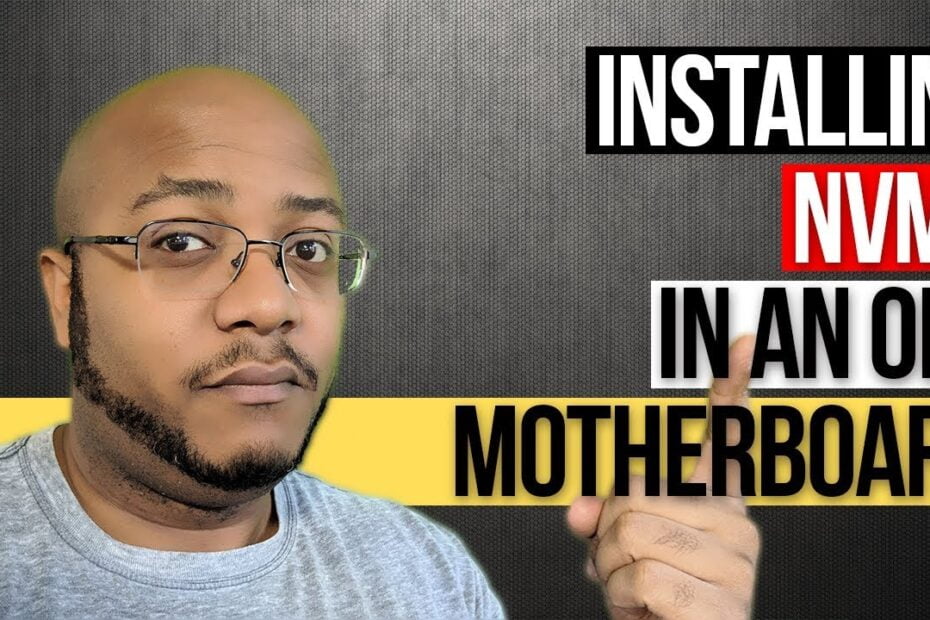Last Updated on December 2, 2022 by Tech Questions
Do you have an older motherboard that you’re looking to upgrade? If so, you may be wondering if you can add an NVMe drive to it. The answer is yes, but there are a few things you need to know first.
Here’s what you need to know about adding an NVMe drive to your older motherboard.
- Check your motherboard’s manual to see if it supports NVMe M.2 drives
- If it does, great! You can proceed to the next step
- If not, you’ll need to purchase a compatible adapter card
- Install the NVMe drive in the appropriate slot on your motherboard
- Make sure it is firmly seated and screwed in place per the manufacturer’s instructions
- Connect any necessary power cables to the drive
- This may be a standard SATA power cable or a separate PCIe power connector, depending on your motherboard and drive model
- Boot into your computer’s BIOS/UEFI settings menu and check that the NVMe drive is detected under Storage Devices or other similar section
- If not, you may need to enable NVMe support in the BIOS settings first before proceeding (consult your motherboard manual for more information)
- Once detection is confirmed, exit out of the BIOS and boot into your normal operating system environment
Will It Work? Installing An NVME SSD PCIe Adapter Into An Old Motherboard
Does Old Motherboard Support NVMe?
Most new motherboards on the market support NVMe these days, but there are still some older models that don’t. So, if you’re wondering whether your old motherboard supports NVMe or not, the best way to find out is to check the specifications. If it’s listed in the specs, then it does support NVMe.
If it’s not listed, then unfortunately it doesn’t.
Can I Install NVMe SSD on Old PC?
Yes, you can install a NVMe SSD on an old PC. Here’s how:
1. Check your system BIOS to see if it supports NVMe. If not, you’ll need to update your BIOS before proceeding.
2. Connect the NVMe SSD to your PC using an appropriate adapter or cable.
3. Format the NVMe SSD using a tool like Disk Management in Windows or Disk Utility in macOS.
4. Install your operating system of choice on the NVMe SSD.
5. Enjoy the increased speed and performance that comes with using an NVMe SSD!
How Do I Connect NVMe SSD to Old Motherboard?
If your motherboard doesn’t have an M.2 slot, you can still use a fast NVMe SSD as a boot or data drive. The catch is that you’ll need to connect it through an adapter, which adds cost and complexity. Here’s how to do it.
M.2 slots are becoming increasingly common on motherboards, but they’re not yet ubiquitous. That means there are still plenty of people with older boards who want to upgrade to the speed of NVMe solid-state drives (SSDs). The good news is that it’s possible to add an NVMe SSD to just about any desktop PC or laptop, even if your motherboard doesn’t have an M.2 slot.
The bad news is that it requires using an adapter, which adds cost and complexity. Let’s take a look at how it all works. First, a quick refresher on M.2 slots and NVMe SSDs: M.2 is a physical connector standard for connecting PCIe-based storage devices such as SSDs to motherboards and other hardware platforms.
PCIe (Peripheral Component Interconnect Express) is a high-speed interface standard for connecting components within computers and other devices; it’s commonly used for graphics cards and Wi-Fi adapters, in addition to storage devices like SSDs.. An NVMe SSD is any solid-state drive that uses the NVMe protocol for accessing data; this type of drive is typically much faster than SATA-based SSDs (but also more expensive).
Many newer motherboards come with one or more M.’ To use an NVMe SSD in a computer without an M.2′ slot, you’ll need two things: an adapter card/bracket that connects the drive to your motherboard’s PCIe bus, and a special low-profile screw set (most regular screws are too tall). You’ll also need some basic knowledge of how to install computer components… but if you’re reading this article, we’re assuming you have that covered!
Is NVMe Compatible With Any Motherboard?
Yes, NVMe is compatible with any motherboard that has an available PCIe slot. However, some motherboards may require a BIOS update in order to support NVMe.

Does My Motherboard Support NVMe?
If you’re wondering whether your motherboard supports Nvme, the short answer is: it depends. Nvme is a newer type of storage device that offers faster speeds and lower latency than traditional hard drives and SSDs. While most newer motherboards will support Nvme, some older models may not.
To check whether your motherboard supports Nvme, you’ll need to consult its documentation or manufacturer’s website. Once you’ve determined that your motherboard does in fact support Nvme, you can then proceed to install an Nvme drive in your computer.
NVMe SSD Slot on Motherboard
If you’re looking to upgrade your computer’s storage, you may be wondering if you should get an NVMe SSD. These drives are the newest and fastest type of solid-state drive on the market, and they offer a significant performance boost over traditional SATA SSDs. But before you can take advantage of an NVMe drive, you need to make sure your motherboard has an NVMe slot.
In this article, we’ll explain what NVMe is and tell you everything you need to know about using an NVMe SSD in your PC. By the end, you’ll know whether or not your motherboard has an NVMe slot and how to use one if it does. What Is NVMe?
NVMe (Non-Volatile Memory Express) is a specification for accessing data stored on PCIe (Peripheral Component Interconnect Express) flash memory drives. It was designed specifically for high-performance solid-state drives (SSDs), and it offers a number of advantages over traditional SATA storage devices. The most obvious benefit of NVMe is its speed.
An NV Me drive can theoretically offer up to 4 GB/s of bandwidth, which is more than ten times the maximum transfer rate of a SATA III connection. In practice, however, most NVMe drives top out at around 3 GB/s due to limitations in the PCIe bus interface. Nonetheless, that’s still several times faster than even the fastest SATA SSDs.
Another advantage of NVME is lower latency. This refers to the time it takes for the drive to start transferring data after receiving a request from the computer’s CPU . With traditional hard drives , this latency could be measured in milliseconds , but with modern SSDs , it’s typically only a few microseconds.
However, even with regular SSDs , there can still be considerable variation in latency depending on where data is located on the drive . With anNV Me drive , all data is accessed equally quickly thanks to its use of parallelism . This means that files can be read and written much faster than with other types of storage device.
Finally ,NV Me also enables greater power efficiency thanks to its support for L1 sub – states . This allows for lower power consumption when active and Idle power states are both used during operation.
Conclusion
NVME, or Non-Volatile Memory Express, is a new type of storage device that is much faster than traditional SSDs. NVME can be added to older motherboards using an adapter, but it may not work as well as on a newer motherboard. If you’re considering adding NVME to your older motherboard, it’s worth doing some research to see if it’s compatible and will work well with your other components.
I am a tech enthusiast who loves to write about the latest trends in the tech world. I am also a big fan of computer gaming and enjoy spending my free time tinkering with new software and hardware. I believe that technology can change the world for the better and I am always excited to learn about new developments in this field.
